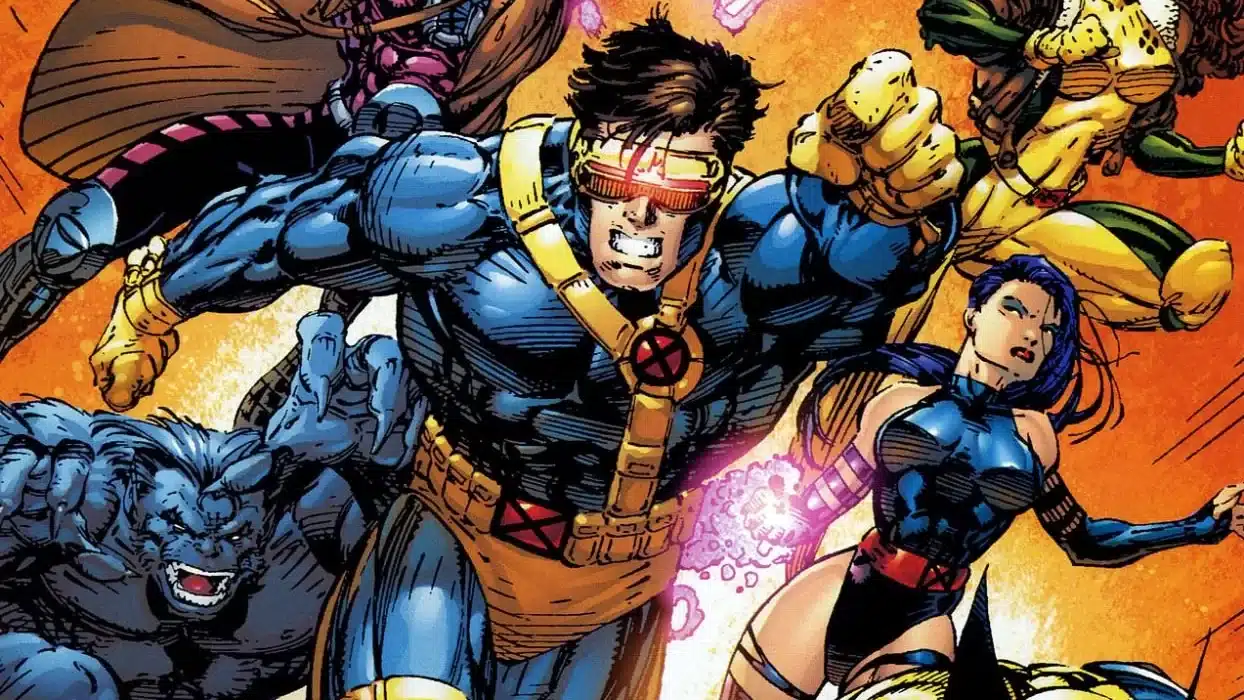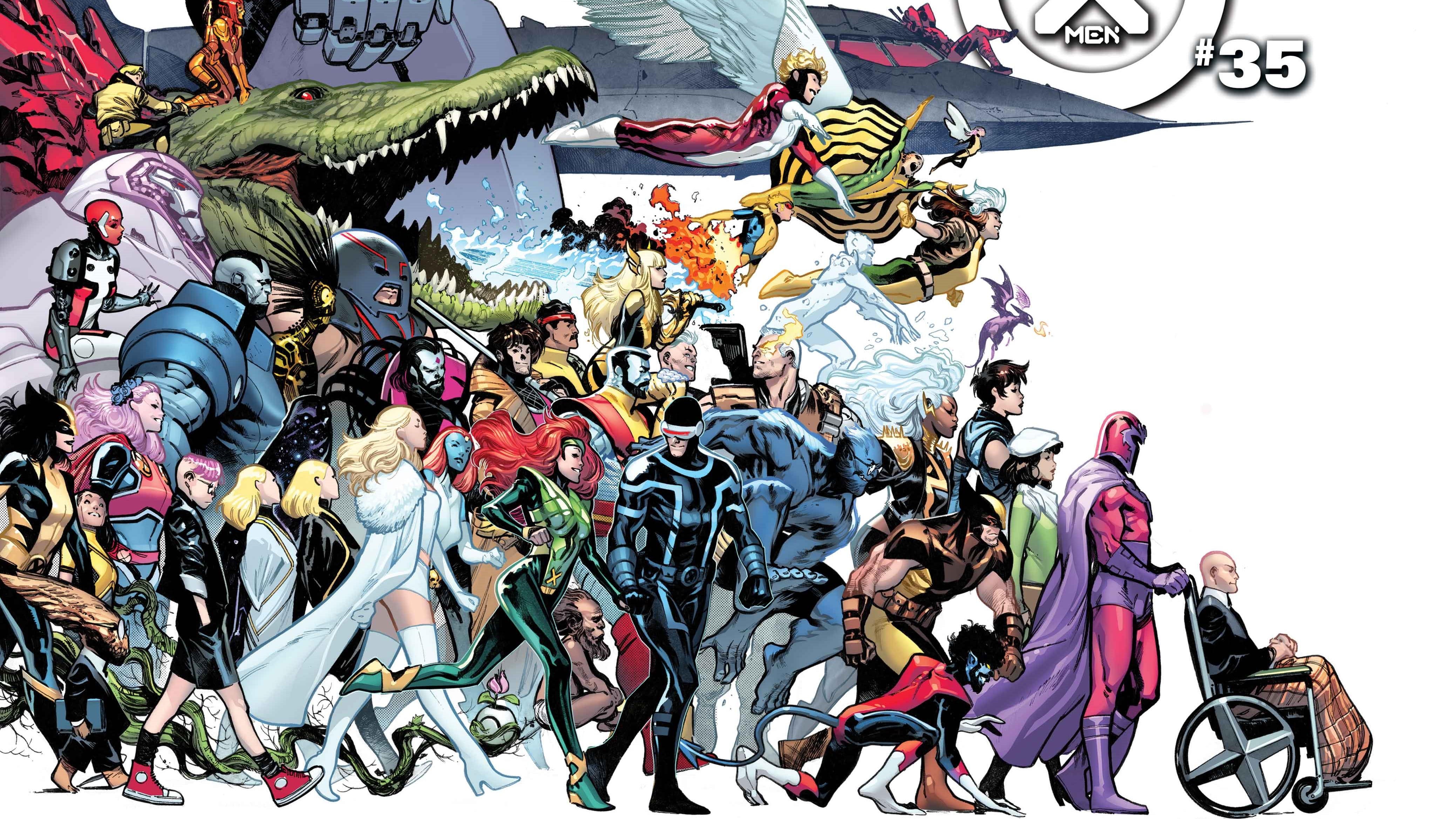Most modern comic book creators are rarely afforded the opportunity to tell long-running stories. Though my generation grew up on serialized original titles like Sandman, Preacher, and Y: The Last Man the industry and artform have changed immensely over the last two decades and, outside of superhero books, those types of ongoing narratives are becoming rarer than an Alan Moore con appearance.
Obviously I’m being hyperbolic because they do exist in books such as Monstress, Black Hammer, and of course, the daddy of them all, Saga. However, a look at those creative teams will tell you that ongoing stories are (generally) reserved for upper echelon creators. Further research reveals that the Eisner Awards category for “Best Serialized Story” was suddenly removed after 2006 because, well, they didn’t need it anymore. “Best Continuing Series,” which already existed, became a catch all. The hard truth is that for low to mid level creators like myself, serialization is less and less of an option.
It’s not just in the creator owned sphere. Even Big Two, critical darling books with name recognition and veteran creators like Hellblazer can’t make it past 12 issues. What this means for creators like me is that we cannot pitch a 50-issue or even 10-issue series because we don’t come with the guarantee of bringing in bank. Instead, we must make short books and only if the initial storyline sells exceedingly well does the publisher approve more issues. While many cite this as a new Golden Age for creator owned comics, most books hardly ever get the chance to flourish, to build an audience.

Undone by Blood is the first creator owned book that my oft-co-writer, Zac Thompson, and I have done to continue beyond its initial 5 issues. Briefly, for the uninitiated, Undone by Blood or The Shadow of a Wanted Man is a neo Western that follows two interwoven narratives. First is that of a young girl in the 1970s seeking revenge on the man who killed her family. Second is the story taking place within the novel she’s reading, which follows the exploits of legendary cowboy, Solomon Eaton, in the 1800s.
We’ve not been secretive about the fact that the series was picked up for television adaptation by Norman Reedus’ company BigBaldHead and AMC. This sort of media attention is not just a large part of what went into our publisher’s decision to extend the series, it is the reason. Getting to extend our world beyond the initial 100 pages was an exhilarating opportunity for us. This was a chance to put our money where our mouths were and build that aforementioned audience, but there was a problem. We were so used to writing mini-series that finding a way to keep the story alive became daunting for Zac, artist Sami Kivelä, and myself. Adding any more to our central narrative felt inauthentic. There was nowhere to go. It became evident that we couldn’t take the serialized route if we were going to continue the series. The thing we dreamed of doing came face to face with harsh reality, and that’s when Zac and I considered the “anthology format”.
The term “anthology format” is a bit of a misnomer because people hear the word “anthology” in comics and tend to think of Creepy, Heavy Metal, Savage Tales, etc. where a single issue contains multiple shorts. There’s a long history of anthologies in the medium, however this new “anthology format” in question is something different, popularized by modern premium television shows like American Horror Story, True Detective, Fargo, and the like. In these shows, one season of 6 to 10 episodes serves as a standalone narrative, and subsequent seasons see familiar elements but with all new characters, locations, and plotlines. To me, this is an exciting new configuration that exists at the crossroads of film and traditional TV. It allows writers to fully explore concepts and characters while avoiding the pitfalls of long running series such as protagonist stagnation, storylines staying beyond their welcome, and general thematic fatigue. It’s worth noting that these perils are not limited to long running television. Anyone who’s followed Spider-Man or Batman through the ages knows how overextended serialized stories have their highs and lows. If it worked to help rejuvenate TV, why not comics, too?
It should go without saying, we’re certainly not the first to consider this in the comics sphere. The path was cut before us by the Hernandes brothers in Love and Rockets, which consistently and beautifully shits in the face of narrative convention. Then the trail was blazed by Ed Brubaker and Sean Phillips’ with Criminal. And the road was paved further by Scott Snyder and Rafael Albuquerque with American Vampire. The genius of those latter series lies in their freedom to introduce a variety of characters, plotlines, and genre tropes, which all exist in one cohesive world while simultaneously appealing to new and old readers alike with every arc, volume, or chapter.

It was precisely this ability to bounce around the world while not feeling shackled by it that appealed to us most. We had always imagined there were dozens of dime store novels about Solomon Eaton, that the book The Shadow of a Wanted Man featured in the first arc was just one of many. Applying this anthology model to Undone by Blood would allow for self-contained volumes, each focusing on brand new protagonists, while Sol and the core theme of fiction vs. reality served as the throughlines. We could examine how the myth of the West reflects across all eras of American history. We could appeal to new fans while nodding to past arcs for those who had been there since day one. And we could continue the series in a way that felt authentic to our initial vision.
Another essential aspect that can’t be overlooked is the appeal of such a format from a publishing and marketing standpoint. Instead of putting out issue #6, it permits us to launch a brand new #1, the power of which cannot be understanded in the direct market. A glance at any series’ sales numbers shows just how much more people purchase and order books solely because they have a “#1” on the cover. And to be candid, our sales numbers on the first arc would be considered a flop in most cases (that’s what we get for introducing a Western during a pandemic). So the prospect of breathing life into the series with a new first issue, coupled with the heat of a potential TV adaptation, anthologizing was not just an option, it was our only option.
The end result was that for our second arc we would jump to 1930s Texas to follow a United States Postal Service worker who gets dragged into an heist by his wildcard cowboy-loving friend during the Great Depression. This is accompanied by a younger Solomon Eaton’s story of a train heist gone wrong South of the border. And so became Undone by Blood or The Other Side Of Eden, a vastly different dish from our first volume, albeit garnished with the same spices.

There are, unfortunately, downsides of this hybrid format. You can likely tell by this point we run the risk of confusing readers and retailers. We already had an Undone by Blood #1 (thankfully we tagged on that or The Shadow of a Wanted Man part), and now we have a second Undone by Blood (or The Other Side of Eden) #1. We’re trying to have our cake and eat it, too. Yes, we did this to bring in new audiences, but communicating such to shops and casual readers who are so accustomed to comics being one way and don’t follow our every word on Twitter is tough…
“So this is an anthology-style-format, like…uhh, True Detective. Oh, you didn’t watch that…well it’s like Fargo–No, the TV show, not the movie. Okay, you didn’t see that either? Hmm. Well, the first arc followed this one character, and this second arc follows a different character but also the same character that’s in the book within the book. You don’t have to have read the first arc, but, it would enrich your experienc– oh you’re confused? Let me try again…”
You see my point.
In spite of this, I believe format risks like this need to be taken. While serialized creator owned comics may never have been the norm, they are a dying breed. This is happening at a time when Comics with a capital “C” are seen as an art more than ever, and yet comic books are seen by those that hold the purse strings as a means to an end. It’s hard to blame them. Nobody wants to get stuck with a series that only sells a couple thousand copies come issue #10. Any book running more than 5 issues which doesn’t have a major name attached to it is not merely an investment risk, it borders on financial suicide. The business of modern comics publishing is a nuanced topic that deserves its own article, but Comics are not only a business. The result is an internal strife, a battle going on between artists and the products we are perceived to produce. This conflict is one of several at the heart of the industry’s current trend favoring miniseries or graphic novels over longer narratives. I am not suggesting every series needs to be ten volumes in length. I am saying I believe there is more space in the market than we are currently affording for creators of all sizes to tell important stories which demand a longer page count.
It’s necessary to point out that some publishers are taking these risks, such as Vault with Wasted Space. Even Ice Cream Man from Image is an atypical example of an enduring comic, one that grew a readership over time. All this is to say, I know editors want to work on longer titles, too. So, if we’re going to accept that the serialized Vertigo days of yore are gone, as creators and publishers and readers, we must find ways to reinvigorate the medium, for such is truly the means of upholding the spirit of those classics. Perhaps this anthology format is one such way.

Zac and I have never strayed from the philosophy “Write the books we’d want to read,” and this format experiment is another byproduct of sticking to our proverbial guns (anyone who reads Undone by Blood knows we’re anti-gun). Going beyond 5 issues for a creator owned comic is new, welcomed, privileged territory for us, and we’re trying to do it our way. We’re looking at this as an opportunity to test our belief that comics need time to find an audience, and to prove that longer series can and should be embraced. We’re grateful to Aftershock Comics, for trusting us to do so.
While Zac and I have been scripting The Other Side Of Eden, we’ve discovered that this anthology format holds another hidden merit. It’s helped to reinvigorate and reignite the passion we held for the book when we initially pitched it, something that’s too easy to lose, and we’ve tried to embed that in every page. We hope you’ll join us on the journey as we continue exploring the world of Undone by Blood alongside the Wild West frontier that is the modern comic book industry.





